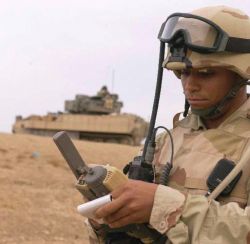
In-band radio frequency interference (RFI) is a serious threat to the reliable operation of GNSS receivers. When the RFI power level is high enough to render the GNSS receiver inoperable, usually no visible external signs appear indicating that anything is out of order; so, the user initially assumes the receiver has experienced an internal failure.
In-band radio frequency interference (RFI) is a serious threat to the reliable operation of GNSS receivers. When the RFI power level is high enough to render the GNSS receiver inoperable, usually no visible external signs appear indicating that anything is out of order; so, the user initially assumes the receiver has experienced an internal failure.
For the purposes of this article, the determination of the presence and seriousness of an RFI problem is called RFI situational awareness. Without the sophistication of built-in RFI situational awareness in the GNSS receiver design, the determination of the presence and seriousness of in-band RFI problems is an extremely inefficient and frustrating process.
Given the growing proliferation of a very large variety of transmitters around the world, the noise floor for GNSS receivers will undoubtedly continue to increase along with the threat of disabling, in-band RFI.
This article describes the design techniques and advantages of built-in RFI situational awareness using a very simple and inexpensive design called a jamming-to-noise power ratio (J/N) meter.
One caveat, however: the J/N meter design is “simple and inexpensive” only if this capability is carefully pre-planned in the design of the original GNSS receiver front-end components, layout, and implementation. Another caveat is that commercial GNSS receiver front-end designs using one-bit analog-to-digital converters (requiring no automatic gain control) do not fit the design prerequisites for this concept.
A retrofit to an existing design is usually impractical. The initial justification for including RFI situational awareness in the design might be based on the significant performance advantages described in this article, but every GNSS receiver user that anticipates or has ever experienced an operational failure due to in-band RFI will greatly value this feature. Certainly, all safety-of-life GNSS applications and military operations should require it.
(For the rest of this story, please download the complete article using the link above)




